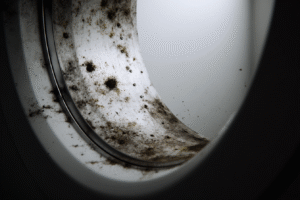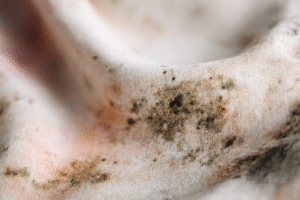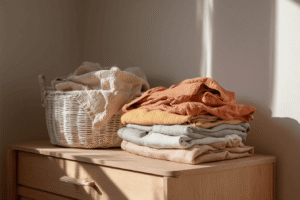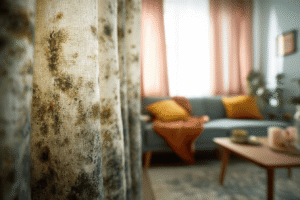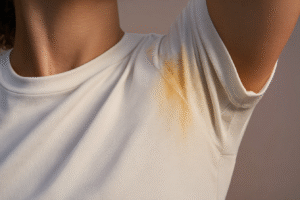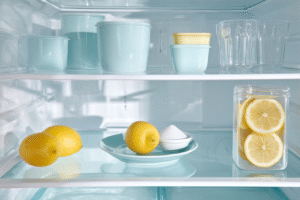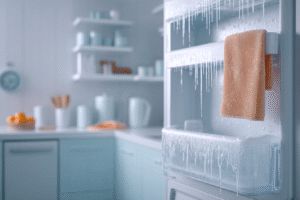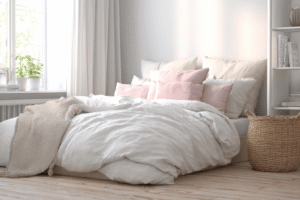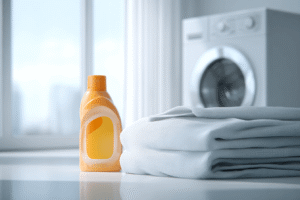Summarise this article with:
Oops! Did just mistakenly bleach your favorite shirt while doing your laundry?
We’ve all been there. One splash of bleach and your favourite top looks like it’s been through a DIY experiment. It’s frustrating, especially when it feels like there’s no going back. But here’s the good news: while bleach doesn’t technically stain your clothes, there are clever ways to fix—or at least disguise—the damage.
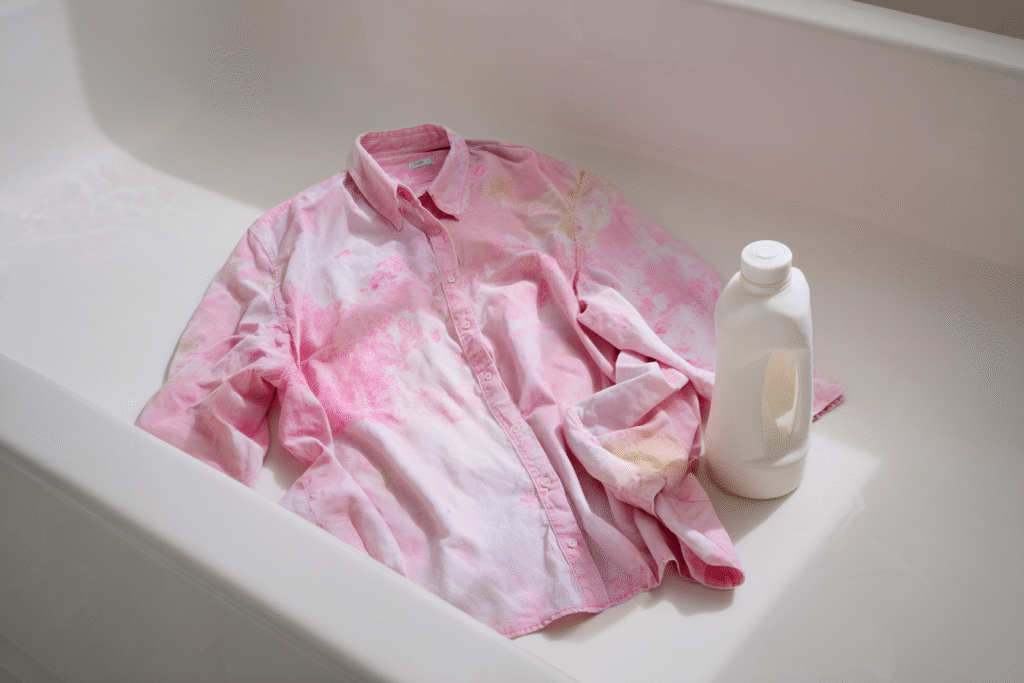
What Actually Happens When Bleach Hits Your Clothes?
Right, let’s get a bit scientific for a moment. When bleach meets your clothes, it triggers a chemical reaction that breaks down the dye molecules in the fabric. It’s not adding something nasty – it’s taking away the colour that was already there. Imagine bleach as a tiny Pac-Man, gobbling up all the pigment in its path.
This process affects different fabrics in various ways. On white clothes, bleach might leave yellowish marks or make the fabric appear uneven. On coloured garments, you’ll see those telltale light spots where the original dye has vanished forever. Black clothing shows the most dramatic contrast, often revealing orange or yellow patches underneath the surface dye.
Speed is crucial. The longer bleach sits on fabric, the more dye it removes. That’s why acting fast is key—it won’t reverse the damage, but it can stop it from spreading. So, while you can’t “undo” bleach, you can definitely stop it in its tracks and get creative with repairs.
Essential Supplies for Bleach Stain Emergencies
Be ready the next time bleach goes rogue. Keep a simple stain-fighting kit at home:
Must-haves:
- Baking soda
- White vinegar
- Dish soap
- Rubber gloves
Nice-to-haves:
- Hydrogen peroxide
- Fabric markers
- Fabric dye
- Cotton wool balls or swabs
Store your kit in a labelled container near your laundry area, so you can act fast if a spill happens again.
Emergency Response: First Steps When Bleach Strikes
How do you neutralise bleach on clothes?
The first thing to do is stop the chemical reaction. Don’t wait—rinse the affected area immediately with cold water. This helps flush out the bleach before it causes further damage. Hold the fabric under running water for at least five minutes.
Next, make a paste using baking soda and water. Apply this gently to the area. Baking soda helps neutralise any remaining bleach and soothes the fibres. You can also use white vinegar in a pinch, but don’t mix it with bleach directly—it creates dangerous fumes. Always handle bleach in a well-ventilated space.
Pop on rubber gloves to protect your skin, and open windows if you’re working indoors. Bleach is powerful stuff, and proper safety measures will protect you while you fix the damage. Once the bleach is neutralised, you’re ready to try the right method based on your garment type, whether you plan to dye, camouflage, or even hand wash your clothes as part of the recovery process.
Can I dye over a bleach stain
Yes, you can dye over a bleach stain, but it’s tricky. The bleached area will still show up lighter than the rest of the fabric, even after dyeing. Your best bet? Dye the entire garment for an even colour, or use a fabric marker for small spots. Just remember—bleach damages the fabric, so results can be patchy.
Method 1: Tackling Bleach Stains on Your White Outfits
How do you remove bleach stains from white clothes?
Good news—white clothes are the easiest to fix. Since they don’t rely on dye, bleach doesn’t leave contrasting marks but can cause your clothes to become yellow (just like those pesky sweat stains on your white shirt).
Start with a white vinegar solution—one part vinegar to two parts water. Soak the stained area for 5–10 minutes, then rinse well. This helps lift yellow residue left by bleach overuse.
Next, try lemon juice, especially for cotton fabrics. Apply it directly to the spot, place the item in the sun for an hour, then rinse. The natural acidity can help brighten the area.
For stubborn stains, hydrogen peroxide is a gentle yet effective bleach alternative. Dab it onto the mark with a cotton pad, wait 5 minutes, then rinse. Be careful to test first on a hidden area.
If none of these tricks work, consider calling in the pros. Some bleach marks just won’t budge with home remedies, especially on delicate fabrics. Wecasa’s professional cleaners can assess and treat the damage safely.
Method 2: Fixing Bleach Marks on Black and Dark Clothes
How do you remove bleach stains from black or dark clothes?
Dark clothes show bleach marks the most, but don’t panic—there are ways to fix or cover them. The rubbing alcohol method is a good place to start. Use 70% isopropyl alcohol and a cotton ball. Dab around the bleach spot and gently blend the colour inward. This won’t restore the original dye but can make the mark less obvious.
For small patches, a fabric marker in a matching shade can work wonders. Let it dry fully before wearing or washing. Make sure to test it on a scrap of fabric first to ensure the colour match.
For larger areas, fabric dye is your best option. Choose a dye that matches your garment and follow the packet instructions carefully. Use gloves, protect surfaces, and always do a patch test. Apply with a sponge or cotton pad in circular motions for an even look.
Tip: Mix equal parts water and dye to build up colour gradually—this prevents over-darkening. If the whole garment has multiple spots, it might be time to re-dye the entire item to create a uniform look.
Method 3: Dealing with Coloured Garments
How do you remove bleach stains from coloured clothes?
Bright and pastel-coloured clothes can be tricky. The key is to treat them gently. Start with a dish soap and cold water solution. Mix a few drops of soap into water, then blot the area using a clean cloth. Don’t rub—it can make the stain worse.
Always spot test your cleaning method on an inside seam or hidden corner. Different dyes react differently, and you don’t want to cause further fading.
Work from the outside in. This prevents the bleach mark from spreading or creating a halo effect. Use small dabbing motions and clean cloths.
If the spot is large or the colour loss is dramatic, consider dyeing the entire garment. It’s a bold move, but it can bring the item back to life with a fresh look. Just be sure to use a dye suitable for the fabric type.
Creative Solutions: When Standard Methods Don’t Work
Sometimes, the bleach damage is too visible or widespread for a simple fix. But don’t toss that garment just yet—get creative!
Try a tie-dye transformation. Bleach spots can actually become part of a cool, trendy design. Just use more bleach strategically and create a pattern that looks intentional.
If you’re crafty, embroider over the mark or add a patch. Both options turn the stain into a design feature and give your clothes a unique touch.
Another option is bleach painting. Use a brush to paint patterns or shapes with diluted bleach, turning the mistake into artwork.
Or just embrace the look! Distressed styles are in fashion, especially for denim and dark tees. Make a few more bleach marks and give your garment a second life with edge.
Prevention: How to Avoid Bleach Accidents in the First Place
Bleach accidents can be avoided with a few simple habits. Always wear rubber gloves and old clothes when cleaning or washing with bleach. Even the tiniest splash can ruin your favourite outfit.
Store bleach away from laundry areas unless in use. Keep it sealed, upright, and out of reach of children or pets. Accidental spills often happen when bleach is knocked over or misused.
Check care labels before washing. Some clothes aren’t safe with bleach at all, especially delicate or coloured fabrics. When in doubt, opt for bleach alternatives like oxygen-based stain removers.
Better safe than sorry!
When to Call in Professional Help
If you’ve tried everything and your favourite outfit still looks worse for wear, it might be time to let the pros take over. Bleach can damage fibres beyond the surface, especially on delicate or expensive items.
Dry cleaners can sometimes even out colour loss or advise on re-dyeing. Just be realistic—some marks can’t be reversed.
Weigh the cost of repair vs. replacement, especially for everyday items. And don’t forget, Wecasa offers professional at-home laundry and cleaning services to take the stress off your shoulders.
Bleach accidents don’t have to spell the end for your favourite clothes. While we can’t promise to make every bleach stain disappear completely, with these professional cleaning techniques, you can minimise the damage and even transform accidents into fashion statements. Remember, the key is acting quickly and staying calm. Whether you’re dealing with white clothes, dark garments, or coloured items, there’s usually a solution that can help.



